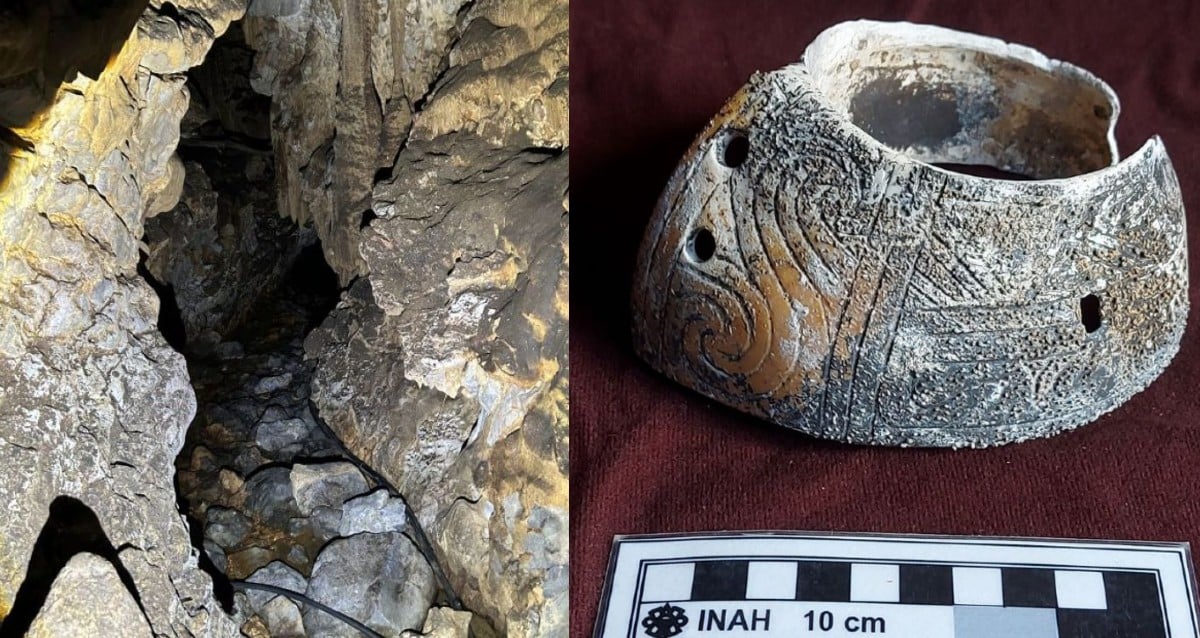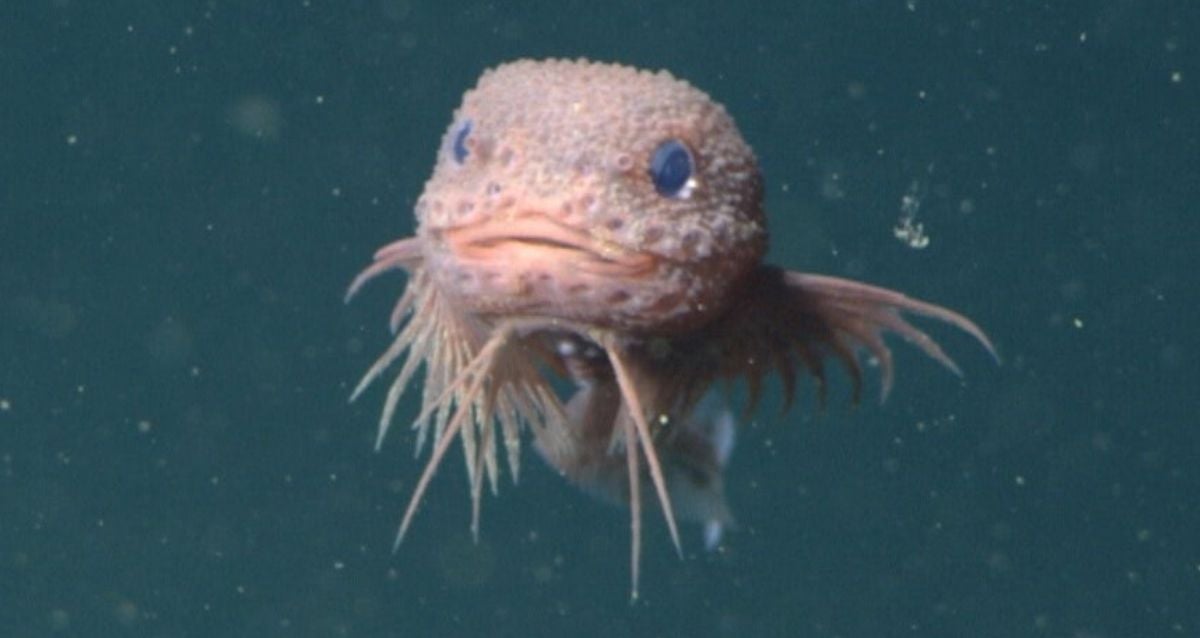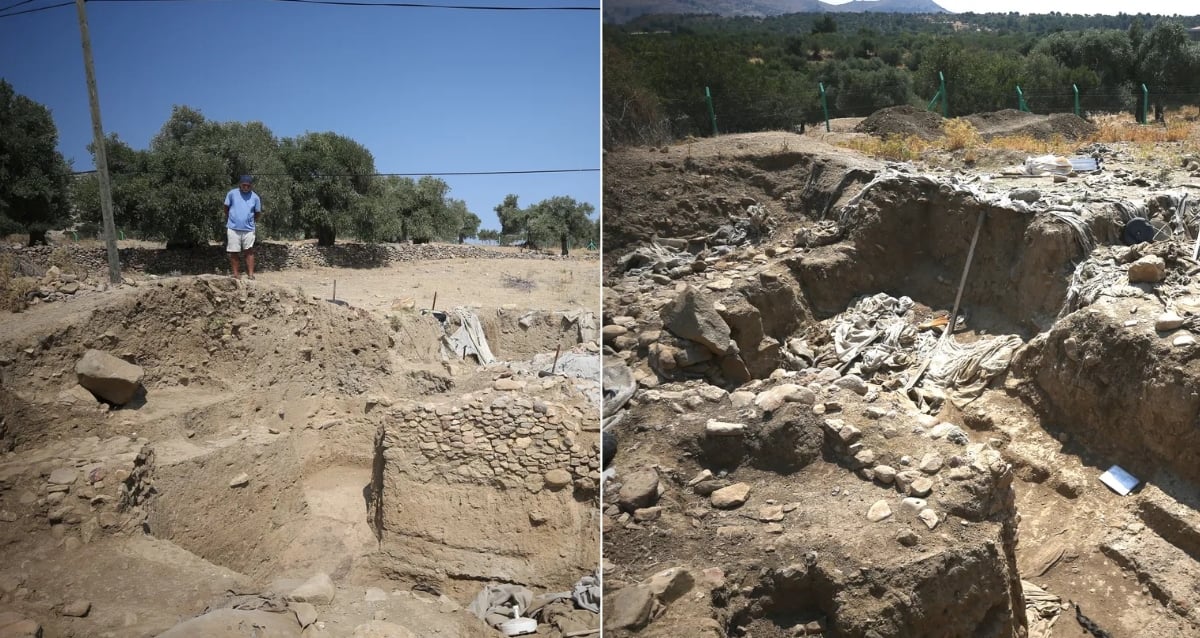Hidden 500-Year-Old Relics Unearthed by Two Adventurous Spelunkers in Remote Mexican Cave—What Secrets Do They Hold?
Imagine stumbling into a cave that’s been off-limits for 500 years, only to find… not just dust bunnies or bat guano, but a curious stash of ancient treasures. Yep, that’s exactly what happened in Mexico’s Tlayócoc Cave when spelunker Katiya Pavlova and her guide Adrián took a break from their trek and uncovered 14 artifacts that whisper secrets from the mysterious Tlacotepehua people. These weren’t just any trinkets—they’re believed to have played a starring role in fertility rituals some 500 years ago, featuring perforated snail shells, stone discs, and bracelets wrapped snugly around stalagmites, like nature’s very own jewelry stand. Makes you wonder—did ancient Mexicans have a better sense of cave décor than we give them credit for? Dive into the fascinating world where history, mystery, and a touch of ancient bling collide. LEARN MORE
Believed to have been used in fertility rituals by the Tlacotepehua people sometime during the Postclassic Period that spanned 950 to 1520 C.E., these artifacts included perforated snail shells, stone disks, and a collection of bracelets that had been wrapped around the cave’s stalagmites centuries ago, just “like a ring on a finger.”

Miguel Pérez/National Institute of Anthropology and HistoryArchaeologists believe that the objects date from the Postclassic Period (950 to 1521 C.E.).
In 2023, a spelunker and her guide set out to explore a Mexican cave that’s believed to have gone untouched for 500 years. Deep inside this subterranean expanse, they eventually came across a number of objects that initially appeared to be trash — but were actually centuries-old artifacts from the little-understood Tlacotepehua culture.
These 14 objects, including three engraved shell bracelets, are a fascinating collection of rare relics, made all the more interesting due to the fact that archaeologists believe they may have been left inside the cave on purpose as part of a fertility ritual hundreds of years ago.
The “Exciting And Incredible” Discovery Of Centuries-Old Relics Inside Mexico’s Tlayócoc Cave

Katiya Pavlova/National Institute of Anthropology and HistoryA portion of the vast interior of Tlayócoc cave.
According to a statement from the National Institute of Anthropology and History (INAH), the objects were found at Tlayócoc Cave by Russian speleologist Yekaterina Katiya Pavlova and her guide Adrián Beltrán Dimas. It’s likely that no one had ventured deeply into the cave for 500 years, though locals use it as a resource for water and bat guano for their gardens.
Dimas and Pavlova, who has been exploring and mapping caves for six years, trekked far into the cave, navigating through narrow passageways and pools of water. While taking a break at one point, they suddenly noticed a collection of objects nearby — which, initially, Pavlova angrily dismissed as trash that had just recently been thrown there by someone.
Then Pavlova realized that she and Dimas had stumbled upon something much more spectacular: a collection of 14 artifacts that had seemingly been left in the cave some 500 years ago.
“It was very exciting and incredible,” she said. “[W]e were lucky here.”

Katiya Pavlova/National Institute of Anthropology and HistoryOne of the centuries-old objects that was recently uncovered inside Tlayócoc Cave.
After photographing the objects, Pavlova and Dimas contacted the National Institute of Anthropology and History to take a closer look at the site.
The 14 Artifacts Found In Tlayócoc Cave And How They May Have Once Been Used
Archaeologists, alongside a local historian, made the long trek to Tlayócoc Cave to examine the objects that Pavlova and Dimas had discovered.

Guillermina Valente/National Institute of Anthropology and HistoryThe phallic nature of the stalagmites in the cave suggest that the area may have once been used to conduct fertility rituals.
There were 14 objects recovered from the cave in all: three bracelets, possibly made from conch shells, a fragment of a bracelet made from a mollusk shell, a sea snail shell with perforations and decorations, a piece of carbonized wood, two complete stone discs, similar to pyrite (“fool’s gold”) mirrors, and six more fragments of discs, as well as sediment samples.
Iconography on the three bracelets seems to show the “representation of beads” as well as a symbol known as “xonecuilli.” In the Nahuatl language, this means “crooked foot,” and is associated with the planet Venus. Another figure on the bracelets appears to be Quetzalcoatl or Tlahuizcalpantecuhtli, deities associated with the “morning star” and seashells.

Miguel Pérez/National Institute of Anthropology and HistoryThe “s-shaped” symbol on one of the bracelets, which means “crooked foot” in the Nahuatl language and is associated with the planet Venus.
These motifs are similar to what’s been found at other archaeological sites in the area. Archaeologists believe that these new discoveries likely date back to between 950 and 1521 C.E., and that they’re probably linked to the Tlacotepehua people that once inhabited the region. Some 500 years ago, archaeologists suspect that the Tlacotepehua used the cave, its phallic stalagmites, and these objects to conduct some kind of fertility ritual.














